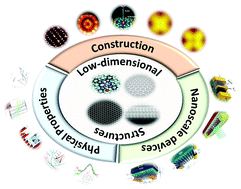Construction and physical properties of low-dimensional structures for nanoscale electronic devices
Abstract
Over the past decades, construction of nanoscale electronic devices with novel functionalities based on low-dimensional structures, such as single molecules and two-dimensional (2D) materials, has been rapidly developed. To investigate their intrinsic properties for versatile functionalities of nanoscale electronic devices, it is crucial to precisely control the structures and understand the physical properties of low-dimensional structures at the single atomic level. In this review, we provide a comprehensive overview of the construction of nanoelectronic devices based on single molecules and 2D materials and the investigation of their physical properties. For single molecules, we focus on the construction of single-molecule devices, such as molecular motors and molecular switches, by precisely controlling their self-assembled structures on metal substrates and charge transport properties. For 2D materials, we emphasize their spin-related electrical transport properties for spintronic device applications and the role that interfaces among 2D semiconductors, contact electrodes, and dielectric substrates play in the electrical performance of electronic, optoelectronic, and memory devices. Finally, we discuss the future research direction in this field, where we can expect a scientific breakthrough.

- This article is part of the themed collection: PCCP Reviews


 Please wait while we load your content...
Please wait while we load your content...